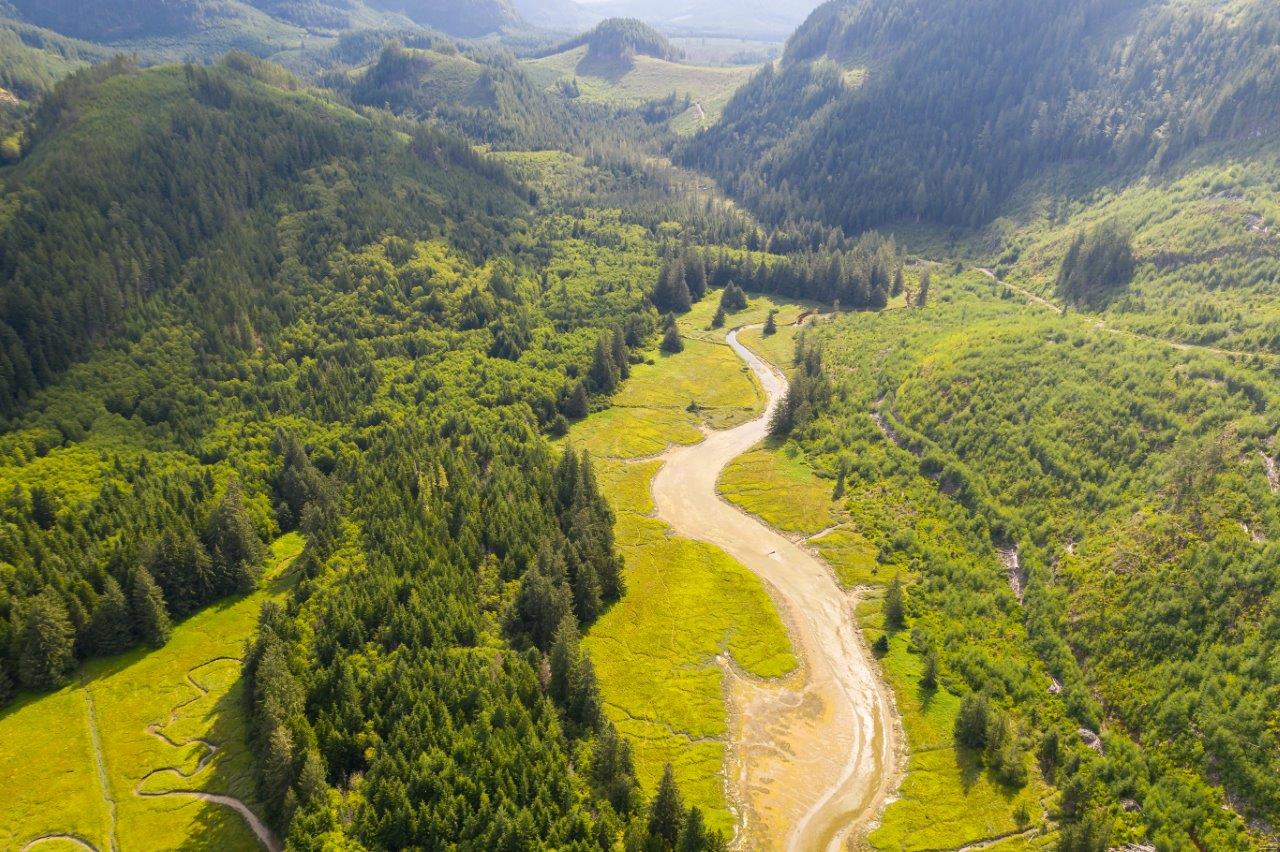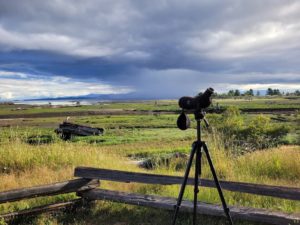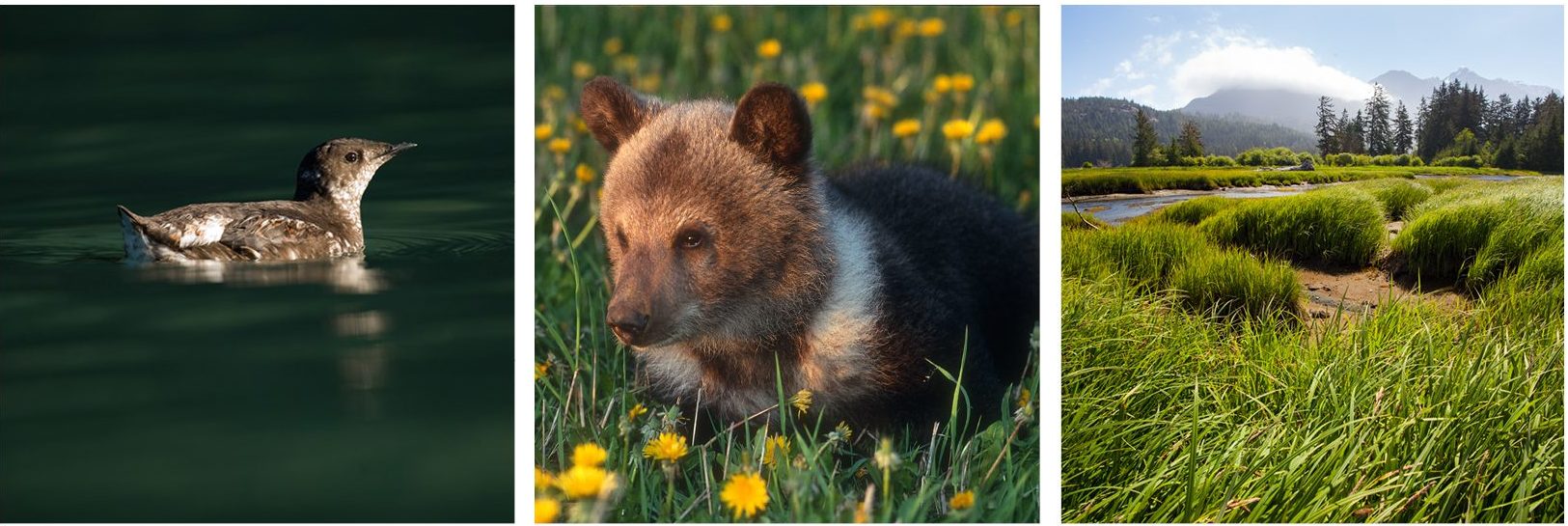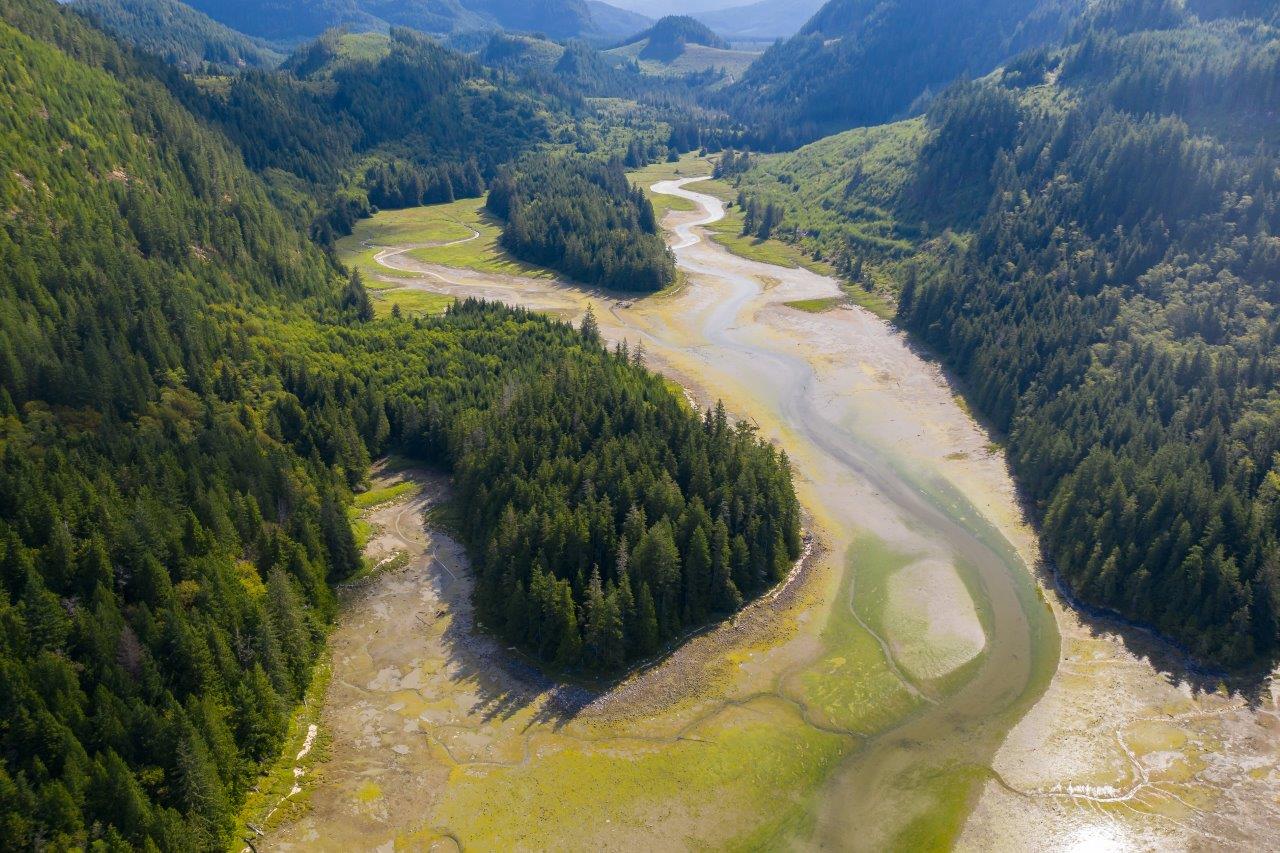When fresh water from rivers and streams meets the salt water of the ocean, biodiversity flourishes. Many species can only live in the brackish, mixed water of estuaries, and these special species are some of the most rare and endangered in the world.
Estuaries comprise only about 3% of BC’s coast but support 80% of all fish and wildlife in the province.
In 1987, The Nature Trust took a leadership role with other conservation partners, and federal and provincial government departments, to establish the Pacific Estuary Conservation Program (PECP) for the purpose of acquiring, protecting and enhancing estuaries along the B.C. coastline.
Now, The Nature Trust of BC has the opportunity to protect 320 acres (130 hectares) of land in the Shoal Creek Estuary near Port Neville on the mid coast of B.C.

Protecting Land
The Shoal Creek estuary is approximately 13 km east of Port Neville. The property consists of two parcels, the first of which was purchased last year. There are no buildings or structures on the property and the area is only accessible by water or air.
The property varies from sea level tidal flats to rising steep mountain slopes. While previously logged in the 1990s, the property is now representative of naturally regenerating forest.
This property lies on the Pacific Flyway, the migration route extending along the Pacific from Alaska to the southern tip of South America. Millions of birds stopover in fresh water wetlands and estuaries each year along the flyway and protecting these areas are a high priority for conservation internationally.



